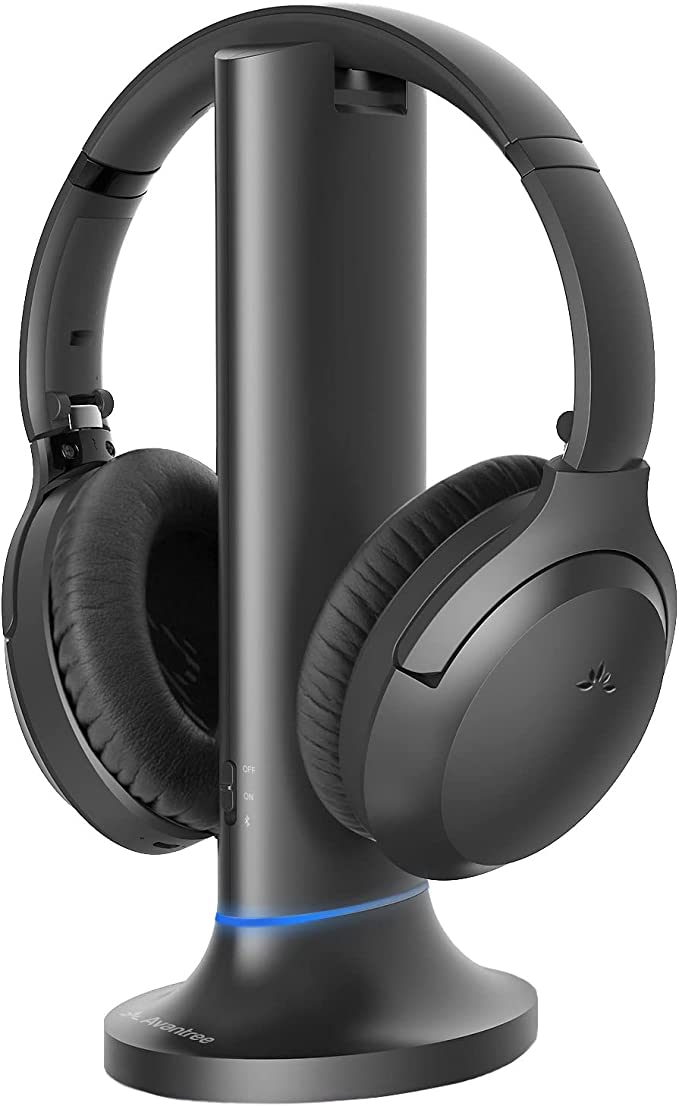Denon Home Subwoofer: Deep Bass, Wireless Freedom for Your Home Theater
Update on March 15, 2025, 11:32 a.m.
Imagine you’re watching a sci-fi blockbuster. Spaceships zoom across the screen, lasers blast, and then… a giant robot takes its first, earth-shaking step. But something’s off. It sounds… thin. The visual spectacle is there, but the feeling is missing. That missing element is often the deep, resonant bass – the low-frequency sounds that provide the foundation for a truly immersive audio experience.
We often talk about “hearing” sound, but low frequencies are just as much felt. They vibrate through our bodies, creating a visceral connection to the audio. Think of the rumble of thunder, the throb of a bass drum, or the low hum of a cello. These sounds add depth, power, and emotional weight to both music and movies. They’re not just about loudness; they’re about creating a sense of scale and realism.
The human ear can perceive sounds ranging from roughly 20 Hz (Hertz, or cycles per second) to 20,000 Hz (20 kHz). Subwoofers are specialized speakers designed to reproduce the lowest part of this range, typically from around 20 Hz up to 200 Hz. While many standard speakers attempt to reproduce these frequencies, they often struggle to do so with the necessary power and clarity. This is where a dedicated subwoofer like the Denon Home Subwoofer comes in.

Feeling the Rumble: Introducing the Denon Home Subwoofer
The Denon Home Subwoofer isn’t just another box to add to your home theater setup. It’s a carefully engineered piece of audio equipment designed to fill in that crucial missing piece: the deep, resonant bass that brings your audio to life. It’s about adding that feeling back into your favorite movies and music. No more thin explosions or weak basslines.
This subwoofer achieves this through a combination of smart design choices and advanced technology. It’s wireless, meaning you can place it virtually anywhere in your room without worrying about running speaker cables. It seamlessly integrates with other Denon Home speakers and soundbars, creating a cohesive and immersive sound system. And, perhaps most importantly, it’s designed to deliver accurate bass – not just loud, boomy noise, but controlled, articulate low frequencies that enhance, rather than overpower, the rest of your audio.
Eight Inches of Excellence: The Science of the Driver
At the heart of the Denon Home Subwoofer lies an 8-inch woofer. This isn’t an arbitrary size. The diameter of a speaker driver directly impacts its ability to reproduce low frequencies. Larger drivers can move more air, and moving more air is essential for generating those deep, powerful bass notes.
Think of it like the difference between a small drum and a large drum. A small drum produces a higher-pitched sound because it has a smaller surface area vibrating. A large drum, with its larger surface area, can displace more air, creating a lower, deeper tone. The 8-inch driver in the Denon Home Subwoofer is specifically chosen to strike a balance between size (allowing it to fit comfortably in most living rooms) and performance (delivering substantial bass output).
The woofer itself is also “downward-firing.” This means the driver is mounted facing the floor, rather than directly out into the room. This design choice isn’t just for aesthetics. It has several acoustic benefits. First, it helps to distribute the bass more evenly throughout the room. Low-frequency sound waves are less directional than high-frequency waves, and a downward-firing woofer utilizes the floor as a reflective surface, spreading the sound more uniformly. Second, it can help to reduce unwanted vibrations and resonances within the subwoofer cabinet itself.

The Magic of Air Movement: Understanding Bass Reflex Design
You’ll notice that the Denon Home Subwoofer isn’t a sealed box. It has a carefully designed port, often referred to as a “bass-reflex” port. This isn’t just a hole; it’s a precisely engineered tunnel that dramatically enhances the subwoofer’s low-frequency output.
The principle behind this is called Helmholtz resonance. It’s the same phenomenon that occurs when you blow across the top of an empty bottle and hear a low-pitched hum. The air inside the bottle (or, in this case, the subwoofer cabinet) acts like a spring, and the air in the port acts like a mass. This combination creates a resonant system that amplifies sound at a specific frequency, determined by the size and shape of the port and the volume of the cabinet.
In a bass-reflex subwoofer, the port is carefully tuned to resonate at a frequency just below the natural roll-off point of the woofer. This effectively extends the subwoofer’s low-frequency response, allowing it to produce deeper bass than it could in a sealed enclosure. The port doesn’t create more bass; it enhances the bass that the woofer is already producing, making it more efficient and powerful at those crucial low frequencies. It’s a clever application of physics to improve audio performance. However, the design of a bass-reflex system is a delicate balancing act. If the port is not tuned correctly, it can lead to “boomy” or “one-note” bass, where certain frequencies are exaggerated and others are weak. Denon’s engineers have carefully optimized the port size, length, and shape in the Home Subwoofer to ensure a smooth, balanced, and accurate low-frequency response.
Cut the Cord, Keep the Quality: HEOS Wireless Technology Explained
One of the most appealing features of the Denon Home Subwoofer is its wireless connectivity. This is achieved through Denon’s proprietary HEOS technology. HEOS isn’t just about eliminating wires; it’s a complete multi-room audio platform that allows you to stream music throughout your home, all controlled from a single app.
Unlike some simpler wireless audio solutions that rely on Bluetooth, HEOS uses your home’s Wi-Fi network (supporting standards up to 802.11ac, for robust and reliable connection). Wi-Fi offers significantly higher bandwidth than Bluetooth, which is crucial for transmitting high-quality audio, especially the data-rich low frequencies handled by a subwoofer. This higher bandwidth allows for the transmission of uncompressed or lossless audio formats, preserving all the detail and nuance of the original recording.
HEOS also employs sophisticated digital signal processing (DSP) to minimize latency – the delay between the audio source and the sound you hear. Latency is particularly important for subwoofers because any delay between the subwoofer and the main speakers can result in a disjointed and unnatural sound, where the bass seems to lag behind the rest of the audio. HEOS minimizes this latency, ensuring tight synchronization between the subwoofer and your other speakers. The precise latency figures aren’t explicitly published by Denon, but user reports and reviews generally indicate that it’s low enough to be imperceptible in typical home theater setups.
The HEOS app (available for iOS and Android) is the control center for your entire Denon Home system. It allows you to easily add the subwoofer to your network, adjust its volume, and, importantly, fine-tune its performance to match your room and your other speakers.
The Perfect Blend: Crossover Frequency and Phase Adjustment
Integrating a subwoofer seamlessly into your audio system involves more than just plugging it in (or, in this case, connecting it wirelessly). Two key adjustments are crucial: crossover frequency and phase.
The crossover frequency is the point at which the subwoofer takes over the low-frequency duties from your main speakers. For example, if you set the crossover to 80 Hz, the subwoofer will handle all sounds below 80 Hz, and your main speakers will handle everything above that. Choosing the right crossover frequency depends on the capabilities of your main speakers. Smaller speakers typically require a higher crossover frequency, while larger speakers can handle more of the lower frequencies themselves. The HEOS app provides a variable low-pass filter, allowing you to adjust this crossover point to achieve the optimal blend between your subwoofer and main speakers.
Phase refers to the timing of the sound waves produced by the subwoofer relative to the sound waves produced by your main speakers. If the subwoofer and main speakers are “in phase,” their sound waves will reinforce each other, resulting in a stronger, more cohesive bass response. If they are “out of phase,” the sound waves will partially cancel each other out, leading to a weaker and muddier bass. The Denon Home Subwoofer, accessible through the HEOS app, offers phase adjustment (typically a 0/180-degree switch, or sometimes a variable control). Experimenting with this setting is crucial to achieve the best possible integration. Often, the correct phase setting will depend on the subwoofer’s placement relative to your main speakers.

Beyond the Box: Room Acoustics and Subwoofer Placement
While the Denon Home Subwoofer is a powerful and sophisticated piece of equipment, its performance is also significantly influenced by the room it’s in. Room acoustics – the way sound waves interact with the walls, floor, ceiling, and furniture – play a crucial role in how we perceive bass.
Low-frequency sound waves are long, and they tend to build up in certain areas of a room, creating what are known as “room modes” or “standing waves.” These modes can cause some frequencies to be exaggerated (boomy) and others to be suppressed (weak), resulting in an uneven bass response.
This is why subwoofer placement is so important. Even the best subwoofer can sound bad if it’s placed in the wrong location. While there’s no single “perfect” spot, there are some general guidelines to follow.
- Avoid Corners (Usually): Placing a subwoofer directly in a corner can often excite room modes, leading to boomy bass. However, sometimes, corner placement can be beneficial, especially in smaller rooms. Experimentation is key.
- The “Subwoofer Crawl”: This is a tried-and-true method for finding a good location. Place the subwoofer in your main listening position (where you usually sit). Then, crawl around the room at floor level, listening for the spot where the bass sounds the most even and balanced. This is often a good place to put the subwoofer.
- Experiment: Don’t be afraid to try different locations and listen critically. Use music with a consistent bass line to evaluate the sound.
A Century of Sound: The Denon Legacy
Denon isn’t a newcomer to the audio world. The company has been a leader in audio technology for over 110 years, with a history of innovation and a commitment to quality. This long experience is reflected in the design and engineering of the Denon Home Subwoofer. It’s not just about throwing together some components; it’s about applying decades of knowledge and expertise to create a product that delivers exceptional performance and reliability.
Bringing it All Together: Creating Your Immersive Home Theater
The Denon Home Subwoofer is more than just a standalone product; it’s designed to be part of a larger ecosystem. By combining it with other Denon Home speakers or a Denon Home soundbar, you can create a complete, wireless home theater system that delivers a truly immersive audio experience. Imagine the roar of a jet engine, the rumble of an earthquake, or the deep, resonant notes of a pipe organ – all reproduced with clarity and power, drawing you deeper into the movie or music. The wireless connectivity simplifies setup and allows for flexible speaker placement, while the HEOS app provides centralized control and fine-tuning capabilities. It’s a system designed for both performance and convenience. The Denon Home Subwoofer helps reproduce the audio, exactly how the creator intended.



























































